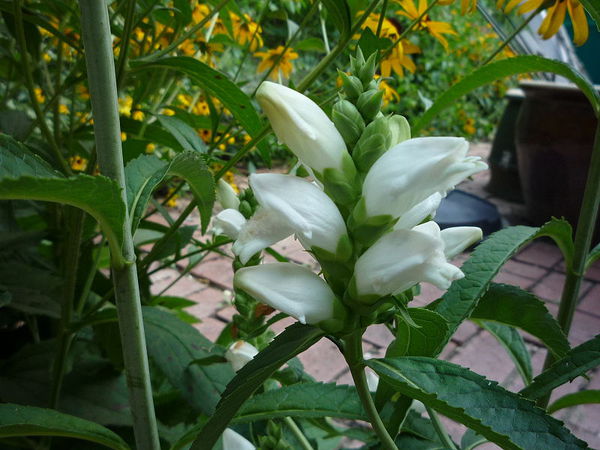
Common Name: White Turtlehead | Scientific Name: Chelone Glabra

Resources
Notes from the Eclectic Physicians
Notes from the Eclectic Physicians
1874:Scudder
The Chelone exerts an influence on waste and nutrition, and deserves study. We would prepare a tincture from the recent leaves, by expression, in the proportion of 3viij. to Alcohol, 76degree Oj. Dose, ten to thirty drops.
1883: Scudder: (tonic)
(The leaves of Chelone Glabra – U.S. )
Preparation – Tincture of Chelone.
Dose – From five drops to half a drachm.
Therapeutic Action – The Chelone is tonic, stomachic, laxative, anthelmintic and hepatic. It is one of the mildest, purest and most congenial tonic and stomachic agents in the materia medica. It is unusually acceptable to the stomach, and is valuable in anorexia, languid or atonic state os the digestive organs, and promots the appetite and facilitates the
process of digestion. In cases of confirmed dyspepsia, especially if attended with torpidity of the bowels, it answers a good purpose, as it does in chronic diseases in general, attended with debility.
1898: Webster
Balmony is a mild tonic, applicable to dyspepsia complicated with hepatic torpor. it improves the digestive power of the alimentary canal, and stimulates the bile secreting functions of the live at the same time, thus being adapted to quite a large class of cases.
It is a valuable tonic after malarial fevers, serving to promote functional activities likely to have been interfered with, especially if the secretions have been locked up through the action of quinine. In tolerably large doses it acts as a gentle purge, an influence very acceptable in may such cases.
The 2x or 3x trituration of chelonin is a valuable remedy in many long standing cases of dyspepsia. Chelonin is an active principle obtained from the crude drug.
Chelonin is also an active parasiticide of the alimentary canal, being especially efficient in the destruction of the lumbricoid worm.
Form for Administration- The specific medicine.
Dose- Ten or thirty drops. The chelonin may be given in doses of one or two grains, or the 2x or 3x trituration may be used in two or three grain doses.
1909: Felter and Lloyd: CHELONE – BALMONY
History -This valuable medicinal plant is found in the United States in damp soils, flowering in August and September. The flowers ae very ornamental, an dvary in color, according to the variety of the plant, there being many varieties. The leaves are exceedingly bitter, but inodorous, and communicate their properties to both water and alcohol.
Action, Medical Uses, and Dosage – Tonic, cathartic, and anthelmintic. Especially valuable in jaundice and hepatic diseases, likewise for the removal of worms, for which it may be used in powder or decoction, internally and also in injection. Used as a tonic in small doses, in dyspepsia, debility of the digestive organs, particularly when associated with hepatic inactivity, and during convalescence from febrile and inflammatory diseases. It is valuable after malarial fevers as a tonic and to unlock the secretions when checked by quinine. Recommended in form of ointment as an application to painful and inflamed tumors, irritable and painful ulcers, inflamed breasts, piles, etc. Dose of the powder, 1 drachm; of the tincture 1 or 2 fluid drachms; of the decoction, 1 or 2 fluid ounces; specific chelone, 10 to 30 drops.
Specific Indications and Uses – Gastro-intestinal debility, with hepatic torpor or jaundice; worms.
1911: Fyfe
Gastro-intestinal debility, torpidity of the bowels, atonic state of the digestive organs, chronic diseases attended with debility, jaundice with loss of appetite, debility of the nervous system form excessive use of quinine.
In hepatic disorders chelone has long been deemed a curative agent. It is said to stimulate the secretive power of the liver, and at the same time give tone and regularity of action. Chelone glabra is tonic, anthelmintic, and laxative.
Disclaimer: The author makes no guarantees as to the the curative effect of any herb or tonic on this website, and no visitor should attempt to use any of the information herein provided as treatment for any illness, weakness, or disease without first consulting a physician or health care provider. Pregnant women should always consult first with a health care professional before taking any treatment.
